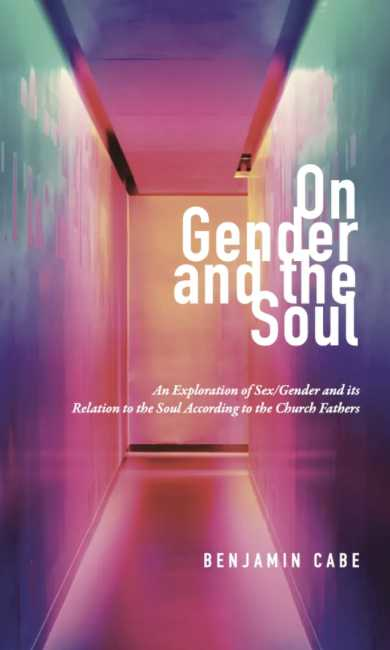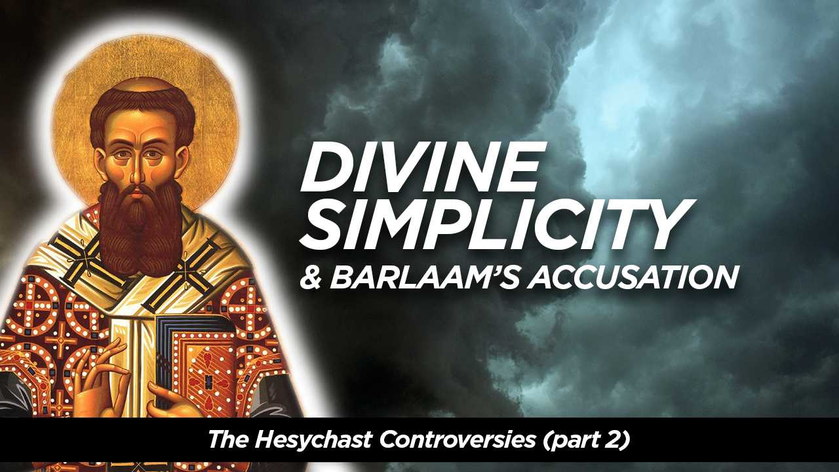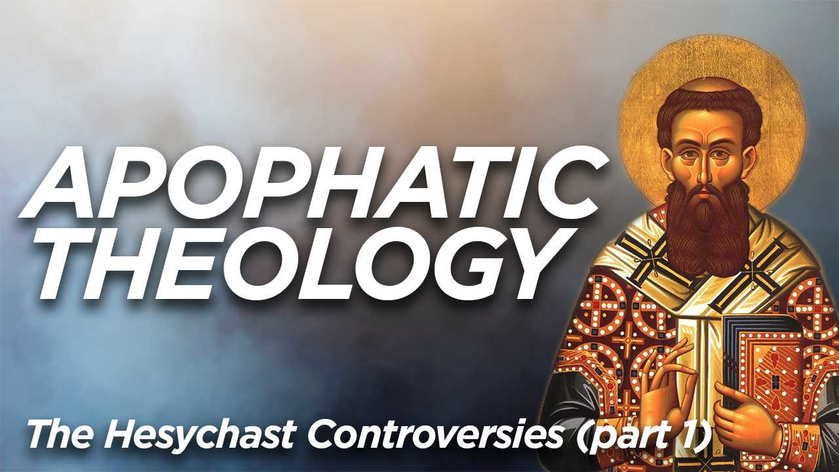
This is a book about gender ideology and the Orthodox Christian Faith; it was initially conceived in 2017, written 2018–2019, and published in 2021.
Updated Preface (October 2022)
There have been a variety of publications detailing the dangers of gender ideology since the initial conception of this work in 2017. Although this work is primarily geared towards a Christian audience – and how our anthropological model precludes us from affirming any form of internal, self-defined gender identity distinct from biological sex – I thought it important to provide a brief summary of other important work here.
In 2018, Dr. Lisa Littman published a study revealing a major demographic shift in trans-idenitifying individuals. A key aspect of her research focuses on how gender ideology is affecting young, adolescent girls, most of whom had shown no evidence of gender dysphoria up until their seemingly out-of-the-blue proclamation of identifying as transgender. She termed this phenomenon rapid onset gender dysphoria (ROGD).
Other studies soon appeared in academia purporting to demonstrate that gender affirming care (providing hormone replacement and opportunities to transition medically) significantly improved mental health in adolescents. These studies have since been retracted.
Ryan T. Anderson made headlines when his 2018 book, When Harry Became Sally, was removed and subsequently banned from Amazon's online store. For his part, Anderson argues that transitioning does not actually solve the issues plaguing the individuals that transitioned in the first place. Saying that it does is an innacurate and dangerous claim.
Building on Littman’s research, American journalist Abigail Shrier published Irreversible Damage: The Transgender Craze Seducing our Daughters in 2020, a chilling book that details the epidemic of ROGD in the United States. Likewise, in 2021 Canadian neuroscientist Dr. Debra Soh published, The End of Gender: Debunking the Myths About Sex and Identity in Our Society, wherein she claims that the ideology produced by transgender activists has no foundation in science. In 2022, British journalist Helen Joyce followed suit with her book appropriately titled, TRANS. To varying degrees, each of these works relate the same thing, including that every single long-term study that involved children who are uncomfortable with their sex demostrated that over 80+% resolved after puberty (called desisting). This was termed the wait and see approach, which is advocated for by Dr. Kenneth Zucker among others. Conversely, virtually all of the adolescents that socially transitioned and were put on puberty blockers (the effects of which, it is claimed, are completely reversible. They are not) later continued to medical transition. More than is admitted by the media later regretted it.
Soh and Joyce speak of autogynephilia and its relation to the gender confusion in men. And both believe that the popularity of transgenderism is more or less homophic. That is, young men or women who are gender non-conforming – and would normally grow into gay adult men or adult butch lesbians – are sold the idea that they are the actually the opposite sex. Dr. Soh backs this claim with brainscans of heterosexual women, heterosexual men, homosexual men, and trans-identifying (biological) men. The latter two are virtually identical.
As is likely clear, Littman, Shrier, Soh, and Joyce are all classic liberals; they have always been supportive of women’s rights and same-sex marriage. For her part, Dr. Soh was even a regular contributor to Playboy magazine. But something about the social dimension of gender ideology gave them pause. This pause led to research which led to their publications. In spite of being politically left of the aisle, each of these women were severely criticized, defamed, and demeaned in an attempt to silence them.
This attempt to silence opposing views points to a larger shift that happened in society that Greg Lukianoff began seeing on college campuses in 2013. Publications are no longer rebutted in normal academic dialogue, as Jonathan Haidt and Greg Lukianoff note in The Coddling of the American Mind, rather there is a push to silence them entirely. There is much that could be said to tie together Haidt and Lukianoff’s work – and more recently, Dr. Carl Trueman’s and Dr. Jordan Peterson’s work – with the aforementioned work on gender ideology. Presently, I am beginning to weave these threads together in forthcoming talks and journal articles, and perhaps, if it gains traction, another book.
One last book I will highlight, which is also a documentary on DailyWire+, is What is a Woman? by Matt Walsh. This book, together with all of the other books and studies, form a compelling amalgalm of reasons why gender ideology is dangerous for our children and our society. While most of the work to this end comes from a medical, social, familial, govermental, and psychological perspective, there has not been a lot of conversation around the topic of theological anthropology. That is what this work is about.
Since the time of it’s publication through Fish and Vine Publishing in 2021, the first printing of On Gender and the Soul, has sold out. Additionally, I have had the opportunity to speak at a variety of places on the topic (conferences, clergy conferences, parishes, universities). For this, and all other opportunities, I am extremely grateful. Unfortunately, Fish and Vine Publishing – which was started by my friend to whom I owe a great debt of gratitude, Aaron Alford, on account of whom this work was published and not left in the dust bin of a completed graduate degree – will be closing shop indefinitely. And so at this point, a second printing is not possible. In order to keep it available to anyone that desires to read it, the present e-book/PDF is being published, with full permission of Aaron Alford and Fish and Vine Publishing.
If you know of a publishing company that may be interested in printing a second edition, or if you would like to book me to speak at your parish, conference, or university, please get in contact with me.
Ben Cabe
October 7, 2022
One last comment I should make is that we should distinguish between those suffering from persistent gender dysphoria, or early onset gender dysphoria (previously, gender identity disorder), from those wrapped up in the social contagion (ROGD). The former is a tiny population (predominately male) that show signs of this in childhood, all the way through puberty, and later in adulthood; the latter show signs of this only immediately preceding their social pronouncement of being transgender. Both gender dysphoria and general confusion over one‘s identity, as is common in adolescents, are painful realities. However, the gender dysphoria that I speak about in this book, as I relate pastoral care, is of the former kind – persistent gender dysphoria – not the latter (ROGD).
Finally, I hope and pray that this book is helpful to Christians seeking to understand the human person from the perspective of theological anthropology.
Original Preface & Introduction: What is Sex? What is Gender?
Ask anyone on a college campus today to define sex or gender and you are bound to get a myriad of different answers: sex is biological and binary but gender is personal and exists on a spectrum; biological sex and gender alike exist on a spectrum and neither are binary; sex is something you do and is distinct from biology; gender is ever changing and is expressed individually in order to communicate personal identity.
What’s the Point Anyway?
What are we to do with such an ever-expanding variety of answers? How do we begin a fruitful discussion on the topic if we do not agree on a definition of terms? And even if we do agree in this regard, how do we communicate in a way that fosters mutual respect and love—even in disagreement?
These questions cut through the debris that litters the landscape of what has become a socio-religious battleground. Yet, an honest appraisal of our biased reactions might reveal that we are unconsciously disinterested in mutual respect or loving disagreement. We may find we do in fact view those who adhere to a stance opposite ours as enemies—and more times than not we treat them as such. Enemies do not have cordial conversations. They wage war.
It is of great importance to me that this work not be used as yet another weapon in what has turned into a modern Christian crusade. There have already been too many casualties. Rather, it should be used by those within the Orthodox Church to understand the topic at hand in order to offer a balm for the souls of those suffering from gender dysphoria. There are two parts to achieving this work of healing. First, the pastor or layman must understand the stance of the Church on the given subject; second, he must be given the tools to help those within his care or sphere of influence. This last part is vital: one cannot accomplish anything in the real world through abstract ideation.
The key is in how we act out what we believe. What is contained in these pages is from the worldview of an Orthodox Christian. While an Orthodox Christian is expected to rely on the Church, Scripture, and patristic witness to shape our worldview (and thus must follow where these lead), many of those we find ourselves interacting with on this subject do not have the same foundation. It would be a grave mistake to believe that we should hold those outside of the Church to the same standards we hold those within it. In the long run, it is far more important to accept human freedom as God accepts human freedom—a reality that will grant space to those around us and could very well lead to life-changing encounters.
History of the Terms Sex and Gender
The meaning conveyed by the signifiers sex and gender have undergone rapid changes over the last decade. But the initial redefinition started much earlier. In the 1960s, John Hopkins professor of pediatrics and medical psychiatry, John Money, linguistically severed gender from sex by suggesting that the former is seated in social constructs and the latter in biology. This bifurcation of sex from gender facilitated a second division between internal gender and biological sexes in order to explain gender dysphoria—a kind of body dysmorphia wherein one feels dissociation from, or incongruence with, the physical body over and against their internal identity. Though historical, professional psychiatric practice concerning treatment for gender dysphoria focused on helping the client come to accept himself in his embodied form, much of modern practice seeks to transform the body by supplementary or surgical means to conform to one’s individual perception of internal identity.
The entire conversation is made more difficult when the range of transgender theses are considered. There are two major schools of thought, within which there are countless variations: One, what I will call the popular approach, and two, the academic approach. The first is characterized by a kind of dualism between external and internal identities; it inadvertently tends toward a male-female binary wherein a woman can be born trapped in a male body or vice versa. The second rejects the male-female binary entirely, claiming that human embodiment itself, as well as gender, exists on a spectrum and is fluid; male and female bodies were developed and solidified by cultural re-enactment of gender roles. As culturally deviant gender identities come to be discovered, accepted, expressed, and reiterated, human biology will follow suit. In this view the sexed body is somewhat irrelevant to gender expression, as its sexual differentiation does not point to an objectively definitive sex, but rather reflects cultural norms.
Today, those who proffer transgender ideologies usually demonstrate an admixture of both the popular and the academic approach, claiming that the male-female binary does not exist but women can be trapped in male bodies—or vice versa—and must be free to express themselves in a culturally feminine or masculine way. This, of course, further complicates the discussion.
So where do we begin in our articulation of a theologically meaningful understanding of sex and gender? Certainly, we could point to the anatomical fact that male and female bodies exist. But not all men behave in culturally masculine ways, and not all women practice the same degree of cultural femininity. Additionally, patristic witness seems to further gender stereotypes by characterizing parts of the soul, passions, and virtues as masculine or feminine. Liturgical hymnography likewise calls female martyrs manly due to their courage. How are we to understand such gender reversals?
In defining our terms here, my proposal is twofold: First, to reconnect the terms sex and gender by admitting biological distinction together with semiological and theological contrasts of the male and female (genders) while admitting, secondly, cultural and patriarchal exploitation of the male-female distinction, variance in roles, and the artificial constructs of the pop-theologies of “biblical manhood,” “biblical womanhood,” and “purity culture.” Sex refers to biology and the physical body, and gender includes both the reality of biological sex and how it is manifested in theologically sound embodied action. This is worth briefly drawing out, as much could be lost in translation.
It seems undeniable to say that gender, as a social construct specifically, does exist. It is deeply embedded in our culture and in our own unconscious perception. Phrases like “men don’t cry” and “women need protection” are two common stereotypes. Nonetheless, one’s performance of these roles, as expected within certain circles, can be psychologically (and even physically) damaging.
To state it another way, what I am saying is that sex refers to the twenty-third chromosome pair—DNA written into every cell of the body—and is biologically unchangeable regardless of hormonal replacement or sex-reassignment surgery. On the other hand, gender includes more than just biology, as we are culturally conditioned to think of certain jobs, clothes, colors, and even mannerisms as masculine or feminine. Most of these tendencies are automatic—so much so that a conservative evangelical Christian meeting an Orthodox priest for the first time might be disturbed to see him with long hair and wearing what looks to be a dress.
By theologically sound action, I mean the exercise of human agency in choosing—with all the innumerable choices in life—how to individuate manhood or womanhood in one’s own sexed existence in a way that is in concert with the whole of the Christian faith. I would be remiss to make an attempt at penning exactly what that is or means here. Though I admit a distinction between sex and gender with these criteria (sex is biological, gender is embodied choice together with social constructs that attempt to place moral meaning on these choices), I have chosen to use the terms sex and gender interchangeably—namely because the soul is neither sexed nor gendered. This, with all its peculiarities, will be drawn out below.
What I will say here is that acceptance of a distinction between biological sex and social gender constructs is not an approval of a distinction between sex and internal gender identity. Simply because a biological male acts in a culturally feminine way does not mean that he is really a female, even if he feels like one.
Concerning cultural iterations of gender, I will only say I believe it morally irrelevant if men are homemakers or wear dresses and makeup or if women hunt, work to support the family, or go to the beach bare-chested. These are cultural stereotypes that, though they may be considered flagrant sins in some contexts, are perfectly acceptable in others. Much of the debate has been spent lampooning these culturally gauche decisions instead of getting at the actual point: how do we encourage human beings to thrive in every domain of life?
If the goal is to shield our eyes from what scares us or divert our attention from what we would rather not see, then we have already confused our purpose in the world as professing Christians. If we are Christians, our only baseline—and surely, our only purpose—in delving into this hot-button topic is to ascertain whether or not a biological male can claim internal femaleness, or vice versa, as a truthful identity. That is, does it contribute to the purpose of theosis and human thriving? Whether our answer is yes or no, we are accosted by yet another question: where do we go from here?
Continue reading by becoming a paid supporter – and get access to a downloadable PDF version of my book below.















